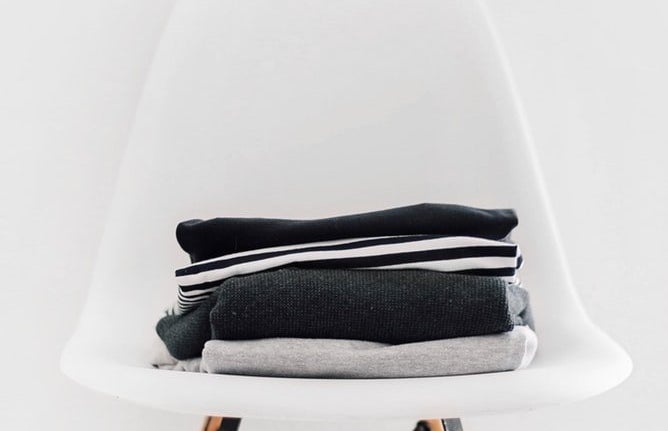In a world of consumerism and fast fashion, people have always been persuaded to purchase clothes out of a catalogue endorsed by famous, beautiful models— clothes that would probably just sit in their closets, untouched. It is often a problem for anyone with a hundred-piece closet to simply choose what to wear from such a wide variety of clothes.
Amid quarantine season and pandemic panic, I’m stuck in my room with all the clothes in my closet that I’ve been ignoring for days in favor of the comfortable baggy shirts and sweatpants that I have on rotation. It got me thinking, what do I really need all these clothes for?
Unlike the satisfying feeling of throwing out all of your crumpled handouts at the end of a semester, Marie Kondo-ing one’s closet is a challenge to any college student who tries not to look like they just rolled out of bed and biked to class. Perhaps it’s the memory of an afternoon of shopping at Forever21 where you bought a metallic skirt on sale; or the warmth you felt when you touched that furry neon sweater. Nevertheless, the sentimental connection we’ve established with the clothes that we buy has made it so hard to let go of them.
I started this project a few weeks ago when the sight of my unorganized, overflowing closet gave me a mental breakdown. So, I prayed to the fashion gods to bestow on me the courage to face the issue, and I started researching ways to cut down my clothing possessions. Here’s what I found:
1. The Minimalist Wardrobe
A product of the Minimalist artistic movement from New York in the 60s, which aimed to explore and express the basic visual elements of art, the concept of a minimalist wardrobe is to strip down your entire closet to the bare essentials. Those who have adopted this lifestyle mostly suggest defining your fashion, getting high quality basic pieces, and opting for versatile neutral colours.
2. The Capsule Wardrobe
Within the minimalist category is the Capsule Wardrobe that originated from Susie Faux who owned a fashion boutique in the 70s in London called Wardrobe. The idea is basically to divide your closet into seasonal clothing, consisting of 30-40 clothing pieces for each section. This similarly requires fine clothing, but with more room for options.
Both of these choices will limit the selection of clothing pieces you have, which means that you might have to repeat outfits once in a while. And retail therapy would no longer be a go-to coping mechanism after getting a bad grade or going through a breakup. However, this could also give you the opportunity to put on your creativity cap and look for ways to spice up your outfits; accessorize, mix and match, and experiment with colour combos!
Looking at the bigger picture, the fashion industry has been one of the biggest polluters in the world because of the synthetic materials used in the mass production of clothes. Retail fashion brands like H&M and Uniqlo have recently been putting effort into reducing this environmental damage by creating new clothes with recycled fabric materials. Hence, minimalism indeed sounds like an ideal solution to your, and the world’s, waste problems. But let’s get real here for a second, a simple reduction in clothing quantity will not magically solve everyone’s problems. Things like, “where will I dump all the clothes I don’t need?” should also be considered.
Last month, I had a full closet that looked like a mall store rack. From the baby blue turtleneck I wore three winters ago to the pink suede skirt I specifically bought to attend my friend’s graduation, all was packed in a plastic bag ready to be given away. I’m left with a duffle bag of clothes, following a personalized set of rules from both options. I now have a total of 40 items of basic and neutral coloured clothes from all seasons combined. To be completely honest, adjusting to a lifestyle with only a bag of clothes is a challenge for me since my early-2000s-tv-chick-inspired fashion demands layers and unique elements. I’m not saying that you should completely drop your taste in fashion and deprive yourself of shopping for clothes. No, after all, fashion is what sets you apart from the crowd; a kind of identity that you present to the world. My point is that we should start being conscious of what we buy and their impact on our lives and the environment. Should we be supporting the capitalist culture that empowers the bourgeoisie instead of investing in our experiences and happiness? Is it really satisfying to buy clothes, or do we just buy clothes to merely fill the void?
I’m kidding. But think about it.



